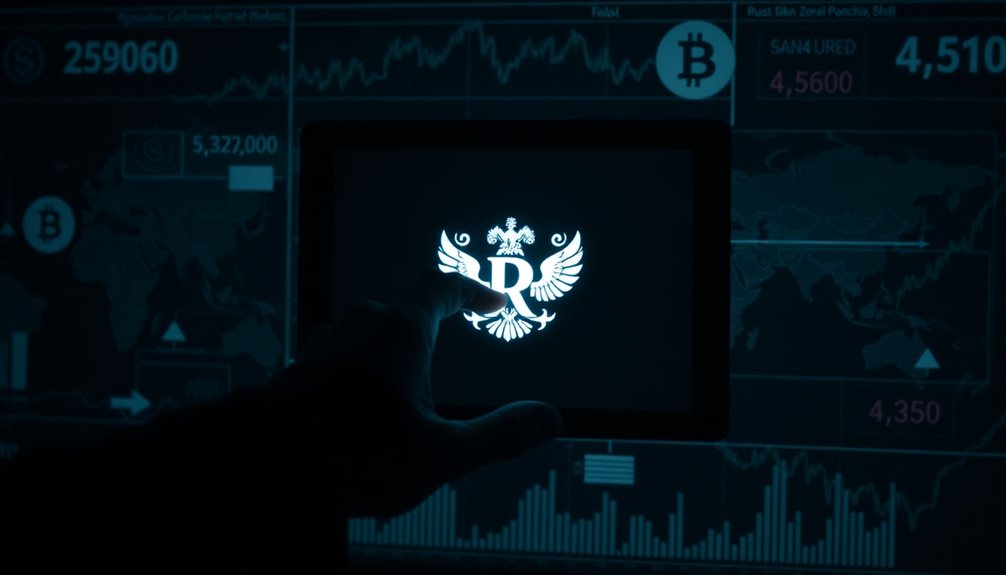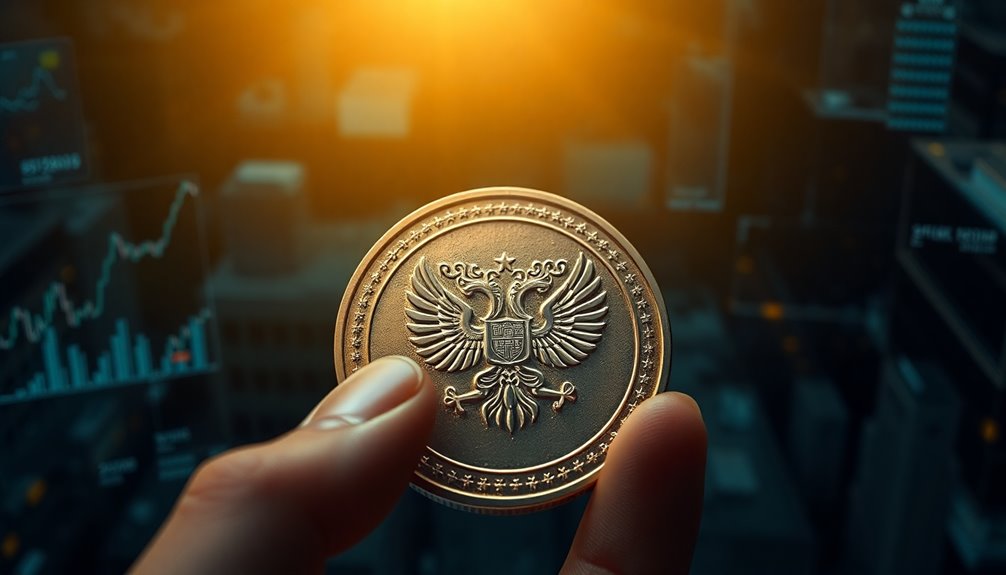
As Russia rolls out its Digital Ruble, the central bank digital currency (CBDC) aims to transform financial transactions and reduce reliance on global reserve currencies. Signed into law by President Vladimir Putin, the Digital Ruble Bill marks a pivotal move in implementing a system that could enhance trade efficiency while diminishing Russia's dependence on the U.S. dollar and euro. This shift comes in the backdrop of financial sanctions imposed due to the ongoing conflict with Ukraine, prompting Russia to seek alternatives for international transactions.
You might wonder about the implications of the Digital Ruble for sanctions evasion. It's designed to facilitate cross-border payments outside traditional financial systems, offering a potential lifeline to circumvent restrictions imposed by Western nations. By integrating blockchain technology, Russia intends to create a secure and efficient way to conduct transactions beyond the reach of sanctioning authorities. This approach not only aims to bolster the economy but also positions the Digital Ruble as a tool for navigating the complexities of international finance. Furthermore, the initial interest in CBDC shown by the Bank of Russia in 2017 highlights the long-term vision behind this digital currency initiative.
The Russian government's support for digital currencies plays a significant role in this strategy. Entities like Garantex and Exved are already facilitating substantial transactions that could aid in sanctions evasion. Being designated by the Office of Foreign Assets Control (OFAC) for their involvement in these schemes highlights the risks associated with these platforms.
With cryptocurrencies gaining traction, they too are being leveraged for cross-border payments, further complicating the regulatory landscape.
Internationally, the response to Russia's moves is cautious. The U.S. has imposed sanctions on individuals and entities that participate in such evasion schemes, while the G7 nations reaffirm their commitment to combating these practices.
Meanwhile, China is also involved, utilizing regional clearing platforms to engage with Russia in ways that could undermine global sanctions. Additionally, the Kyrgyz Republic's Keremet Bank has been implicated in facilitating transactions that evade sanctions, demonstrating how interconnected these efforts can be.
As you observe the evolving situation, it's clear that the Digital Ruble could become a crucial part of Russia's strategy to navigate a landscape shaped by sanctions. While the potential for sanctions evasion exists, it raises significant regulatory challenges and international concerns. The implications of this digital currency will unfold as Russia attempts to redefine its financial relationships on the global stage.
Conclusion
In conclusion, the Russian digital ruble could be a game-changer for the nation facing sanctions. By leveraging blockchain technology, it offers a way to facilitate transactions while bypassing traditional financial systems. This innovation not only strengthens Russia's economic resilience but also challenges the global financial order. As countries explore digital currencies, the implications for international trade and sanctions could be profound. The future of finance might just be reshaped by these digital currencies.










